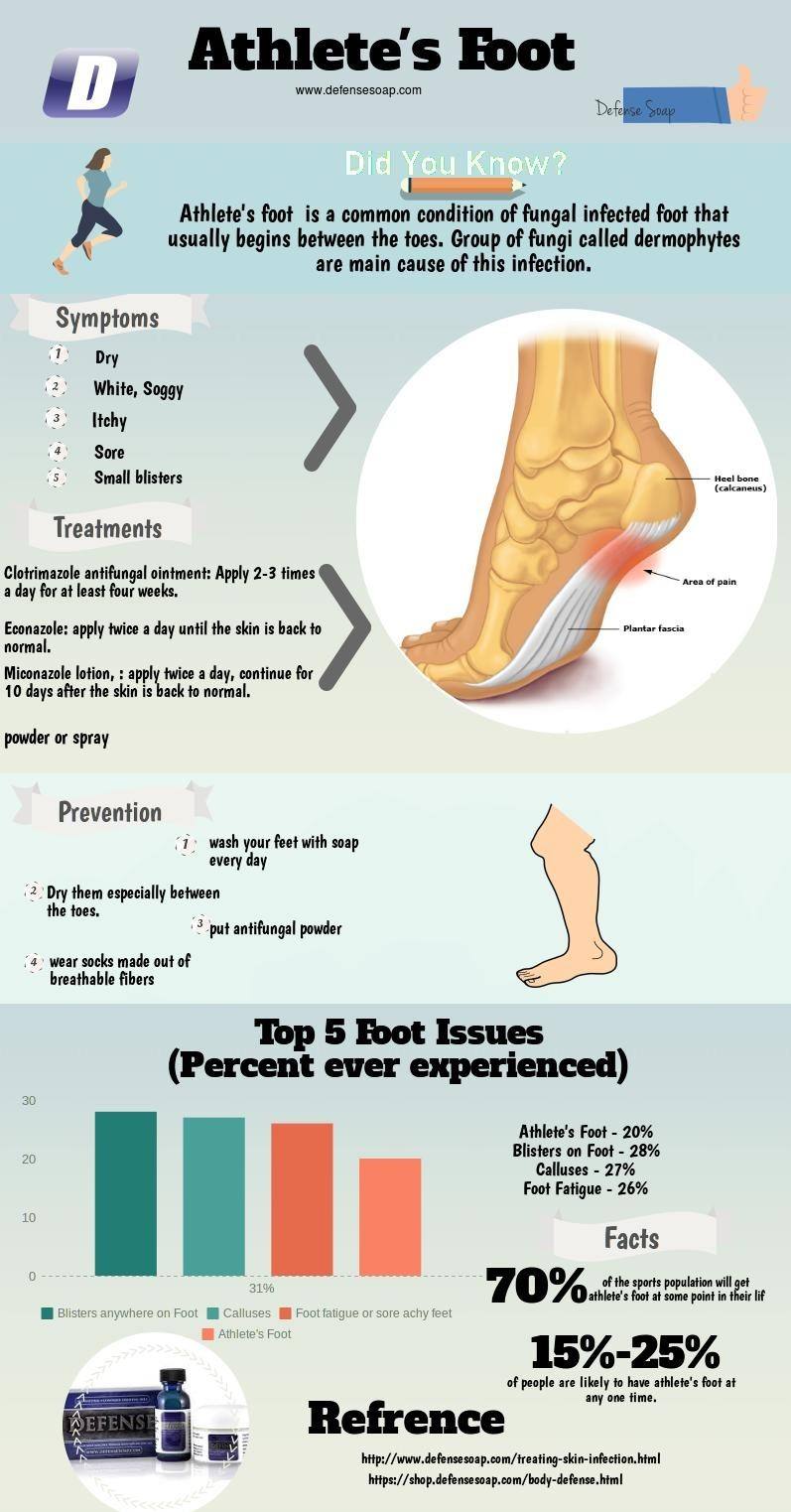Medically termed tinea pedis, athlete’s foot isn’t a serious disease, but it’s not easy to cure unless you are consistent with your treatment, and continue to take precautions to prevent it from flaring up again. It is an annoying disease though, and the affected area may be itchy, scaly, dry, or blistered.[2] Athlete’s foot is a contagious disease, and it can easily be passed from person to person. It is caused by fungus, and these microbes thrive in damp, warm, and dark places. This same fungus causes ringworm and jock itch. The common habits that cause this athlete’s foot are:
1. Damp Feet
If your feet are not dry and clean, you may easily pick up the infection from a contaminated surface. Thoroughly wash your feet and gently dry them, especially between the toes. You can use talcum powder on your feet to help them stay dry.
2. From your Footwear
Repeatedly using the same shoes without cleaning, or not allowing the sweat and dampness inside to dry thoroughly are other contributors. Open-toed footwear allows the air to keep the feet dry, while closed footwear like sneakers hold the dampness in. Avoid wearing shoes that make your feet hot and damp. Wear roomy shoes made of natural materials like leather. It is advisable to change your shoes every couple of days to allow them to dry out between uses.
3. From your Socks
Sweaty, damp socks hold the moisture in and is one of the worst culprits behind athlete’s foot. Don’t reuse the same socks without washing and drying it well. Wear a fresh pair every day. Cotton socks are a better choice than synthetic ones, as they allow your feet to “breathe.”[3]
4. Walking Barefoot in Contaminated Areas
Communal showers, locker rooms, and gyms are highly contaminated with disease, causing microbes, and walking barefoot in these areas can easily cause athlete’s foot.
5. Sharing Contaminated Items
As mentioned earlier, athlete’s foot is highly contagious. A person may scratch the affected area and then transfer the microbes to his personal belongings. So if you share a towel, socks, or shoes, you may end up with the same problem. Ensure that your own towels are washed regularly, and don’t share them with anyone in a communal setting, especially locker rooms.
6. A Weakened Immune System
These microbes are present almost everywhere, and if you have a weakened immune system, you will contract the disease much faster if you don’t take adequate precautions to keep your feet clean and dry at all times.[4] It is not advisable to use moisturizers between your toes, as the moisture helps the fungi multiply.
7. Other Health Conditions
Some health conditions, like diabetes, make a person more prone to contracting these kinds of diseases. So, just same as a person with a weakened immune system, people with such health conditions should also take extra precautions to stay dry. It is unlikely that athlete’s foot will get better on its own. Treatment is easy enough with pharmacy-bought creams. To speed up the recovery process and prevent athlete’s foot from returning, it’s important to practice good foot hygiene, during treatment and afterwards. If not resolved, athlete’s foot can become infected with bacteria. Cellulitis[5] is a severe infection that can spread deep into the body, and this can become life threatening. Follow the steps above to heal yourself, and reduce the risk of spreading the infection.
Infographic Source: defensesoap.com[6] Featured photo credit: www.drjefflamour.com via drjefflamour.com
